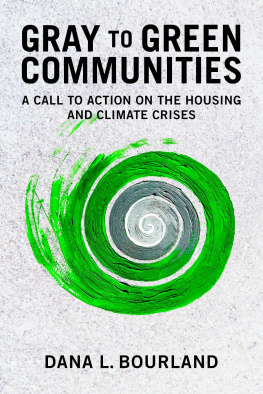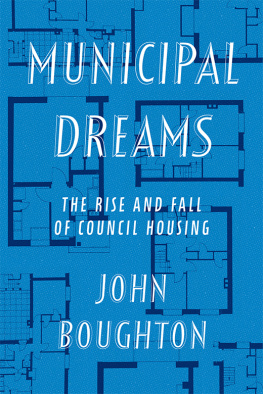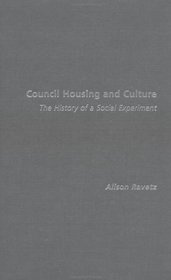ROUTLEDGE LIBRARY EDITIONS:
HOUSING POLICY AND HOME OWNERSHIP
Volume 4
THE FUTURE OF COUNCIL HOUSING
THE FUTURE OF COUNCIL HOUSING
Edited by
JOHN ENGLISH
First published in 1982 by Croom Helm Ltd
This edition first published in 2021
by Routledge
2 Park Square, Milton Park, Abingdon, Oxon OX14 4RN
and by Routledge
52 Vanderbilt Avenue, New York, NY 10017
Routledge is an imprint of the Taylor & Francis Group, an informa business
1982 John English
All rights reserved. No part of this book may be reprinted or reproduced or utilised in any form or by any electronic, mechanical, or other means, now known or hereafter invented, including photocopying and recording, or in any information storage or retrieval system, without permission in writing from the publishers.
Trademark notice: Product or corporate names may be trademarks or registered trademarks, and are used only for identification and explanation without intent to infringe.
British Library Cataloguing in Publication Data
A catalogue record for this book is available from the British Library
ISBN: 978-0-367-64519-9 (Set)
ISBN: 978-1-00-313856-3 (Set) (ebk)
ISBN: 978-0-367-67823-4 (Volume 4) (hbk)
ISBN: 978-1-00-313324-7 (Volume 4) (ebk)
Publishers Note
The publisher has gone to great lengths to ensure the quality of this reprint but points out that some imperfections in the original copies may be apparent.
Disclaimer
The publisher has made every effort to trace copyright holders and would welcome correspondence from those they have been unable to trace.
THE FUTURE OF COUNCIL HOUSING
Edited by John English
1982 John English
Croom Helm Ltd, 2-10 St Johns Road, London SW11
British Library Cataloguing in Publication Data
The Future of council housing.
1. Public housing - Great Britain
I. Title II. English, John, 1944
363.5 HD7333.A3
ISBN: 0-7099-0900-4
Printed and bound in Great Britain by
Biddies Ltd, Guildford and Kings Lynn
Contents
Preface
2 A New Era for Council Housing? Alan Murie
3 The Financial and Economic Implications of Council House Sales Bernard Kilroy
4 The Social Implications of Council House Sales Ray Forrest
5 The Demand for Home Ownership Colin Jones
6 Ideology and Housing Management Pam Gallagher
7 Private Housing at All Costs: Some Lessons from America Valerie Karn
8 The Choice for Council Housing John English
Appendix: Report of the House of Commons Environment Committee on Council House Sales
Notes on Contributors
Council housing has developed since the 1920s until it is now one of the two dominant tenures in Britain, catering for nearly a third of households. It is thus far removed from, for instance, American public housing which accommodates only the poorest in society. In recent years, however, under the combined influences of a sharp reduction in the level of investment and of a growing number of sales, there has been increasing uncertainty about the future of council housing. Both trends have been heightened by the policies of the Conservative government elected in 1979, whose cuts in public expenditure are concentrated on council housing and which has introduced the tenants statutory right to buy at a substantial discount on market value. Looking into the future it is possible to envisage, and this is certainly the governments objective, a much smaller and radically altered council sector which will be confined to the residual role of meeting the real needs of those who are unable to achieve owner occupation.
Discussion of policy towards council housing - and particularly towards sales - has been bedevilled by crude assertions and lack of analysis. The aim of this book is to examine the present state of council housing, to clarify the implications of government policies (especially its emphasis on sales), and to look at prospects for the future. The council sector cannot be examined in isolation from the rest of the housing system: for example, almost any significant change affecting it is likely to have repercussions on owner occupation. Furthermore, housing policy has implications for the economy as a whole. The book thus seeks to take a wide-ranging view of council housing. If one future for the council sector is implicit in the policies of the present government, none of the other main parties has a coherent alternative. Certainly the position before the present government took office does not represent such an alternative; the attractions which are conferred on owner occupation by subsidy and taxation policy ensured that the drift towards residual council housing was already well-established. Some of the requirements for the continued existence of a large council sector catering for a wide range of households are outlined in the final chapter. Choices about policy are quite properly political decisions, but it is desirable that they should be made in the light of a realistic view of likely costs and benefits. This book may make some contribution to more informed debate about housing policy.
Two final points should be made. First, although the book is specifically concerned with council housing, owned and managed by local authorities, most of the analysis is equally applicable to the (small) remainder of the public sector in Britain - mainly housing provided by the new towns and the Scottish Special Housing Association. Terms such as the public sector are generally used interchangeably with council housing. Secondly, housing is a field where policy statements, research findings and so forth appear fairly continuously so that no book can be absolutely up to date when it is published, but as far as possible account has been taken of developments up to mid-1981. There is an appendix on the final report of the House of Commons Environment Committee on council house sales which was published after the main text of the book had been completed.
David Whitham
The building of council but this chapter attempts to outline the evolving role, size and form of the public sector. Statistics have generally been avoided, though tables are included showing numbers of dwellings built and, for more recent years, the breakdown between houses and flats.
Towards Council Housing
British housing at the end of the First World War presented a crisis both of quantity and quality. Advancing byelaw standards and the products of the housing reform movement in the private, co-operative and public sectors, though far from numerous, had shown that high standards were achievable for working-class housing. Those standards had become expectations but they were at the margin of affordability, victim to increasing costs, dearer money, higher rates and new taxation. These threats apart, other outlets for investment had diverted savings from private house building which had come to a virtual standstill about 1908.













